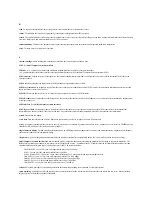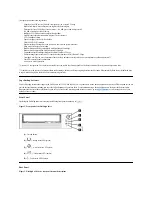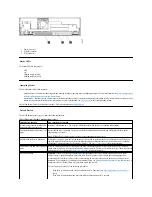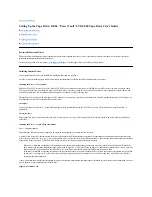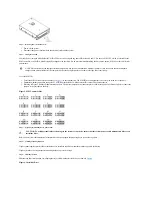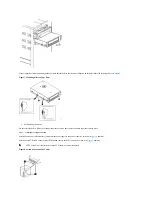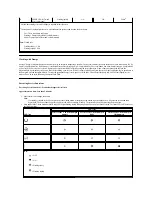
R
read.
To acquire or interpret data from a storage device, from a data medium, or from another source.
reboot.
To reinitialize the execution of a program by repeating the initial program load (IPL) operation.
record.
The smallest distinct set of data bytes that is supplied from a server for processing and recording by a tape drive, and the smallest distinct set of data to be read
from tape, reprocessed, and made available to a server by a tape drive.
relative humidity.
The ratio of the amount of water vapor actually present in the air to the greatest amount possible at the same temperature.
reset.
To return a device or circuit to a clear state.
S
scratch cartridge.
A data cartridge that contains no useful data, but can be written to with new data.
SCSI.
See
Small Computer Systems Interface
.
SCSI bus.
(1) A collection of wires through which data is transmitted from one part of a computer to another.
(2) A generic term that refers to the complete set of signals that define the activity of the Small Computer Systems Interface (SCSI).
SCSI connector.
Located at the rear of the tape drive, the connector that facilitates commands to and from the server, and to which the internal SCSI cable of an
enclosure connects.
SCSI device.
Anything that can connect into the SCSI bus and actively participate in bus activity.
SCSI drive sense data.
In response to inquiry from the server about an error condition, a packet of SCSI sense bytes that contains information about the error and
that is sent back to the server by the drive.
SCSI ID.
The unique address (from 1 to 15) that you assign to a tape drive that uses a SCSI interface.
SCSI ID connector.
Located at the rear of the tape drive, the connector that enables the drive's SCSI address to be set. Addresses are determined by the placement
of jumpers on the pins.
SCSI interface.
See
Small Computer Systems Interface
.
SCSI log sense data.
In response to inquiry from the server about the tape drive's error logs and counters, a packet of SCSI sense bytes which contains that
information and which is sent back to the server by the drive. Log sense data is used to diagnose problems, especially if the problems are intermittent.
second.
One sixtieth of a minute.
sense data.
Data that describes an I/O error. Sense data is presented to a server in response to a Sense I/O command.
server.
A functional unit that provides services to one or more clients over a network. Examples include a file server, a print server, or a mail server. The IBM pSeries,
IBM iSeries, HP, and Sun are servers. Synonymous with host.
single-character display.
Located at the front of the tape drive, an LED that presents an alphabetical or numeric code which represents a diagnostic or maintenance
function, error condition, or informational message.
sleep mode.
A power-management function that causes the tape drive's electronics to automatically enter a low-power mode by which to conserve energy.
Small Computer Systems Interface (SCSI).
A standard used by computer manufacturers for attaching peripheral devices (such as tape drives, hard disks, CD-
ROM players, printers, and scanners) to computers (servers). Pronounced "scuzzy." Variations of the SCSI interface provide for faster data transmission rates than
standard serial and parallel ports (up to 160 megabytes per second). The variations include:
l
Fast/Wide SCSI: Uses a 16-bit bus, and supports data rates of up to 20 MBps.
l
SCSI-1: Uses an 8-bit bus, and supports data rates of 4 MBps.
l
SCSI-2: Same as SCSI-1, but uses a 50-pin connector instead of a 25-pin connector, and supports multiple devices.
l
Ultra SCSI: Uses an 8- or 16-bit bus, and supports data rates of 20 or 40 MBps.
l
Ultra2 SCSI: Uses an 8- or 16-bit bus and supports data rates of 40 or 80 MBps.
l
Ultra3 SCSI: Uses a 16-bit bus and supports data rates of 80 or 160 MBps.
l
Ultra160 SCSI: Uses a 16-bit bus and supports data rates of 160 MBps.
software.
Programs, procedures, rules, and any associated documentation pertaining to the operation of a computer system.
speed matching.
A technique used by the tape drive to dynamically adjust its native (uncompressed) data rate to the slower data rate of a server. Speed matching
improves system performance and reduces backhitch.
Содержание PowerVault LTO-3-060
Страница 32: ......






